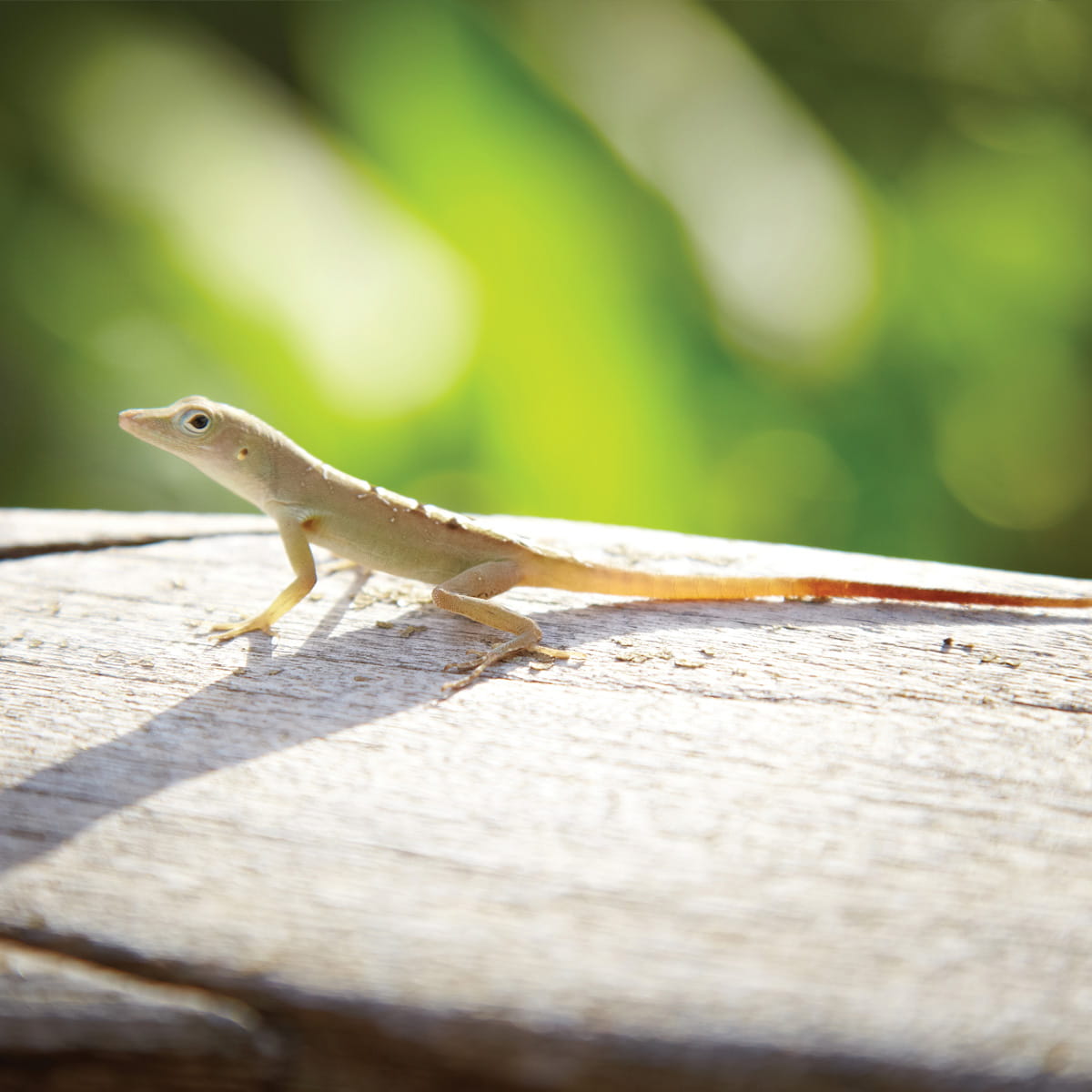University Administration Building
701 S. Nedderman Drive, Ste 421
Arlington, TX 76019-0116
MAV ROUNDUP
Investigating Lizard Levels
Researcher looks at varied lizard populations
In a new study published in Ecology Letters, Luke Frishkoff, assistant professor of biology, explores why the number of species that occur across planet Earth varies.
“Imagine you travel to two mountains, each on a different island,” Dr. Frishkoff says. “The local environment on each of the mountains is the same. They are at the same elevation, they have the same climate, and the same types of vegetation. Based on the similarities, you might expect the number of species to be the same, but often in nature, that’s not what scientists find.”
To uncover why, Frishkoff and his colleagues from the University of Toronto studied the lizard communities on Jamaica and Hispaniola, two Caribbean islands with similar environments. The research team collected data on individual communities of lizards by searching 15-mile radius plots on each.
Even though Hispaniola has many more total species than Jamaica, Frishkoff found that in the expansive lowlands of each of the islands, the number of species within communities are similar. In other words, evolution has proceeded in the lowlands of both islands, filling all the niches.
In the highlands, however, only the expansive mountains of Hispaniola were big enough for species to evolve within them, and as a result, local communities there are diverse. In the geographically restricted mountains of Jamaica, no diverse communities evolved.
“Even though the environments in the highlands are essentially identical, the lack of sufficient area in Jamaica seems to have prevented speciation from being able to fill up local communities,” says Frishkoff.
“This is sort of a case of spooky ecological action at a distance,” Frishkoff says. “The local environment has space for more species in the highlands of Jamaica, but it’s the properties of the mountainous region as a whole, not the local environment, that’s dictating how many of those spots get filled through evolution.”
You Might Also Like

Architecture Excellence
Marking a major milestone and signaling a new era of excellence and innovation for the College of Architecture, Planning, and Public Affairs (CAPPA), Shadi Nazarian was selected as the college’s first H. Ralph Hawkins, FAIA, Chair in Architecture.

Gallery: Benjamin Terry
Benjamin Terry is finding inspiration in surprising places these days. Settling into early marriage, new homeownership, and work as a represented artist with Galleri Urbane in Dallas, he is fueling his creativity through the trappings of domestic life.

Leaving a Legacy
Keith (’74 BBA, Finance) and Jo Krop are avid UTA Athletics fans, often attending games to root on their beloved Mavs.
